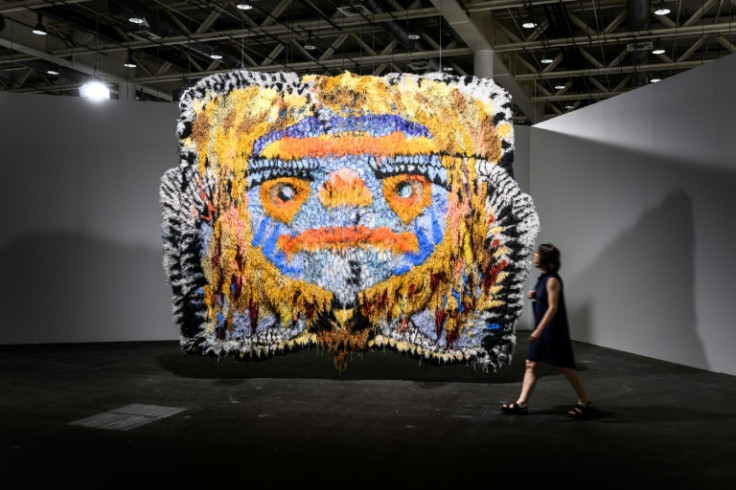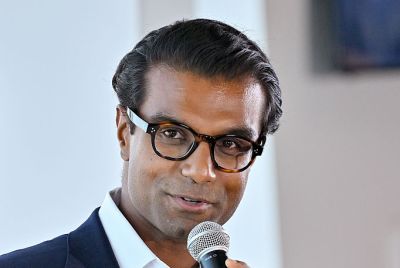Creativity at the Core: Ralph Opacic on the Enduring Power of the Arts Across Industries in the Modern Era

Art has long been recognized for its beauty, storytelling, and cultural significance. People treasure a painting for its ability to capture emotion or a performance for its capacity to unite strangers. Yet its deeper value lies beyond aesthetics.
Art develops creativity, empathy, and imagination: the very qualities that fuel innovation. These human capacities have become indispensable in a world becoming more defined by algorithms and automation. Ralph S. Opacic, Ed.D., a pioneering educator and founder of nationally recognized arts institutions, has devoted his career to demonstrating that art is an essential driver of both personal growth and modern economics.
Opacic's journey began with his artistic ambitions. Growing up in Virginia, he dreamed of becoming the next piano-driven pop star. Mentorship during his university studies sharpened his musical talent but also revealed that gifted individuals were rarely taught how the arts function as a profession.
"Arts instruction focused on performance but neglected financial literacy, industry mechanics, and career sustainability," Opacic shares. Confronting this gap inspired him to build a new model of education, one that prepared students to master their craft and thrive within and beyond the creative industries.
That vision became reality when he founded Orange County School of the Arts (OCSA), a public charter school dedicated to integrating pre-professional arts training with rigorous academics. Students studied music, dance, theater, fine arts, and media while also receiving mentorship from working professionals who modeled what it meant to sustain a career in the arts. Under Opacic's leadership, the school grew from modest beginnings into a nationally recognized institution serving thousands of students each year.
What distinguished his model was its philosophy. Opacic believed that artistry without practical knowledge could leave students vulnerable, while technical skills without creative practice risked producing narrow thinkers. His programs taught students to budget productions, understand intellectual property, market themselves, and collaborate across disciplines.
Rehearsals doubled as lessons in project management, performances as exercises in public leadership. Students learned to critique with rigor and to receive critique with resilience. "The arts aren't extracurricular but foundational. It cultivates both creativity and discipline. These are capacities every sector now demands," Opacic remarks.
Alumni often credited their arts background for the qualities that set them apart: the ability to listen deeply, approach problems from fresh angles, and persevere through uncertainty. "We've seen countless students whose arts training laid the foundation for success in fields like engineering, medicine, and social impact. Whether combining performance with advanced STEM studies or applying creative discipline to leadership and innovation, their paths show how the arts cultivate versatile, forward-thinking individuals ready to thrive anywhere," says Opacic.
After retiring from day-to-day leadership, Opacic turned to helping other arts organizations and schools refine their strategy, strengthen governance, and expand their reach. He emphasizes a framework rooted in four principles. Deliver uncompromising program quality, communicate that quality effectively, build a committed community of stakeholders, and use that support to reinvest in growth. When applied consistently, this cycle can transform organizations into sustainable engines of creativity. Opacic's consulting work equips leaders with the tools to align mission and finance without compromising artistic excellence.
Central to Opacic's advocacy is a thesis about the modern economy: creativity isn't optional. As artificial intelligence accelerates routine analysis and automation reshapes industries, the differentiators will be imagination, empathy, and storytelling. Technology can produce answers, but it can't decide which questions matter.
Art trains individuals to navigate ambiguity, connect meaningfully with others, and envision possibilities that do not yet exist. "Creativity is the last mile of innovation, the step that turns invention into adoption, data into insight, and solutions into experiences that resonate," Opacic states.
His perspective also reframes debates in education. While STEM disciplines remain vital, Opacic argues that without the "A" for arts, students are left incomplete. The arts sharpen communication, teach collaboration, and nurture curiosity.
"These are the attributes that future leaders will need as industries evolve," he says. "History reminds us that during the Renaissance, artistic and scientific learning were inseparable, producing some of humanity's most enduring breakthroughs." Opacic believes the pendulum must swing back toward balance, integrating artistic thinking into every student's formation.
Opacic's vision extends beyond a single school or sector. He imagines a future where arts-integrated education is the norm. Students of engineering learn improvisation to strengthen adaptability, medical students study theatre to enhance empathy, and future entrepreneurs practice design thinking rooted in artistic critique.
He advocates embedding creative entrepreneurship and innovation into curricula alongside mathematics and coding. Moreover, he urges institutions to create apprenticeships that expose young people to the full creative economy, from concept to production to audience.
Ultimately, machines may process faster, but only humans can imagine what is worth building. Art ensures that technology serves meaning, not the other way around. That is Opacic's message in a changing world. He states, "Creativity isn't an accessory. It's the operating system for the future."
© Copyright IBTimes 2025. All rights reserved.





















